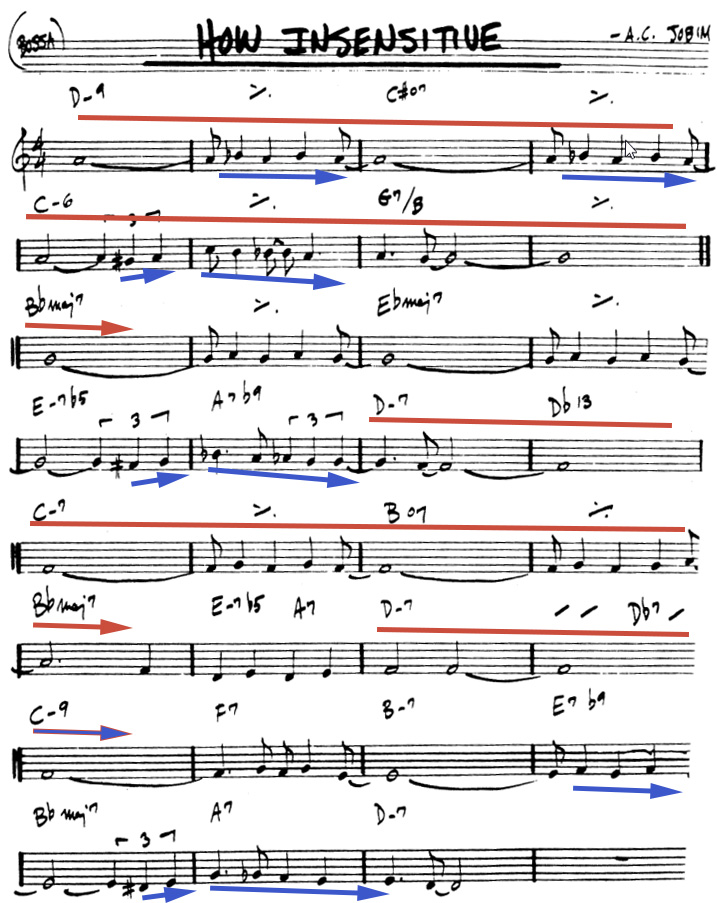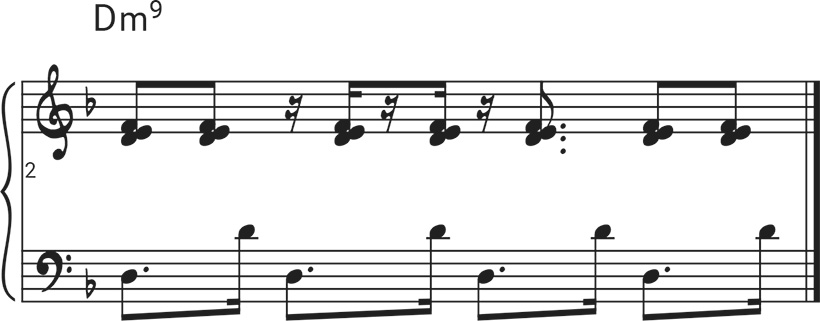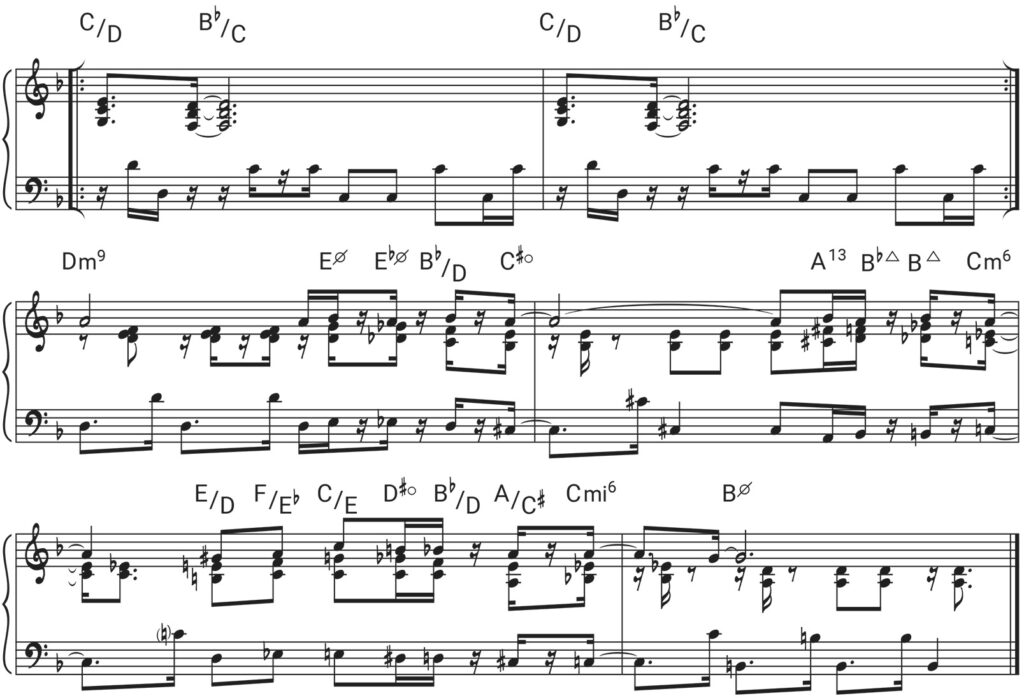“How Insensitive”, or “Insensatez,” is one of the most well-known and beloved compositions by Brazilian composer Antônio Carlos Jobim. In this blog post, I’ll be showing you how to reharmonize it using chromatic bass lines.
The original
First, let’s have a listen to an early version of the song, performed by Jobim himself in 1963:
This piece has a lot in common with Chopin’s Prelude in E minor, both in melody and harmony. Give it a listen:
Chromaticism
What’s interesting about this piece is how central chromaticism is to it. Chromaticism is when melodies or bass lines move up or down by half steps, the smallest interval on the piano.
Let’s have a look at the Real Book lead sheet (I’m generally opposed to using Real Books, but consider this a quick and dirty way to show my point). You’ll notice the bass lines moves down chromatically for a majority of the composition, which I’ve indicated with red arrows. And the melody is also in large part chromatic, indicated with blue arrows:

We’ll come back to the chromaticism of this piece later, when we reharmonize the song.
How To Reharmonize "How Insensitive"
I’ll show you how I reharmonized “How Insensitive” using 5 steps. First, we’ll have to get the basic Brazilian rhythm together. A good way to do this is to start with your left hand playing the bass line.
Step 1: bass line
Start with this basic pattern in your left hand:

Step 2: chord rhythm
Next, we’ll add in a basic samba rhythm in the right hand:

Step 3: play the melody with bass line and chords
This would be considered a basic version of the song, but don’t be mistaken: this is remarkably hard to do! It requires some practice to keep the left hand going and have the right hand play its chord pattern while also playing a melody. You can cheat a little bit here: the chords don’t need to stick perfectly to the above rhythm, but can have some variation.

Step 4: add in chromaticism
More chromaticism? Jorn, does this song really need that?
Well, not necessarily, but this wouldn’t be a Piano String Theory post without some unnecessarily complex harmonies. Plus, I always like to use elements of the original composition as a basis for my reharmonizations.
Start with the bass and create a chromatic bass line up or down that leads to your target chord. In my arrangement, I’ve used a chromatic bass line down to the second chord, C#o. Next, I used a chromatic bass line leading up to the third chord, Cm.

Harmonizing these is tricky: you’ll have to use some trial and error here. You can try to find diatonic chords that fit in the key (for example Eø is the second degree of D minor, so it fits on the E in the bass); sometimes you can use inversions (Bb/D); and sometimes it’s just throwing things at the wall and seeing what sticks (my favorite approach).
Here are measure 3 and 4 using additional chromatic bass lines:

Step 5: add an intro
It’s in the introduction of a song that you can really put your own spin on it. This is where you can set up the mood, the feel, and the character of your arrangement. I decided to, perhaps insensitively (get it?), go for a more upbeat version of this song, playing it faster and starting with a groovy two-chord bass line:

Full Reharmonization
I first came up with this arrangement three years ago, and this is the version that I posted on YouTube:
Conclusion
I hope you enjoyed this arrangement and tutorial! You can apply this method to any Bossa Nova song or other Brazilian songs. If you like Brazilian music, give my Spotify playlist “Brazilian Favorites” a listen below, and feel free to add your suggestions in the comments.
As always, for more reharmonization tips and tricks, make sure to sign up to my mailing list and grab your free copy of the Reharmonization Quick Guide here.

